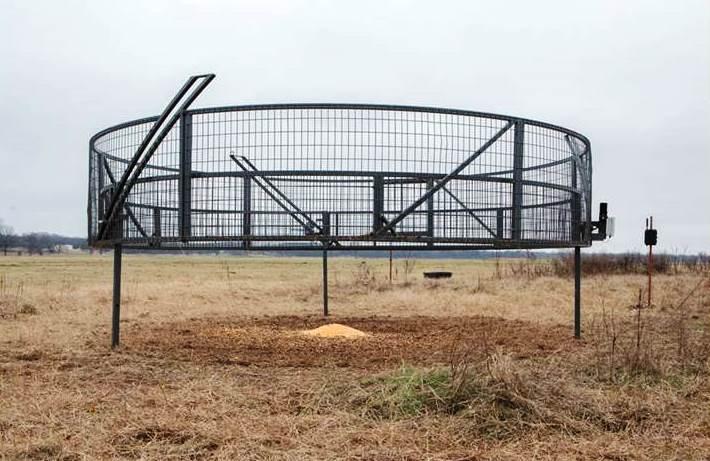
Xplor reconnects kids to nature and helps them find adventure in their own backyard. Free to residents of Missouri.


































Stay in Touch with MDC news, newsletters, events, and manage your subscription

Xplor reconnects kids to nature and helps them find adventure in their own backyard. Free to residents of Missouri.

A monthly publication about conservation in Missouri. Started in 1938, the printed magazine is free to residents of Missouri.








JEFFERSON CITY, Mo. – At its meeting on Jan. 22, the Missouri Conservation Commission voiced initial approval for recommended changes to the Wildlife Code of Missouri that would prohibit the hunting of feral hogs on lands owned, leased, or managed by the Missouri Department of Conservation (MDC).
The next step in the rulemaking process includes a 30-day public comment period on the proposed regulation changes, which will run from APRIL 16 through MAY 15 (revised from April 2 through May 1). Public comments can be submitted by mail to: Missouri Department of Conservation, Regulations Committee, PO Box 180, Jefferson City, Missouri 65102-0180. Comments can also be submitted by email to Regulations@mdc.mo.gov, or online at mdc.mo.gov/node/24141.
Following final Conservation Commission consideration of citizen input and staff recommendations this summer, the anticipated effective date of the regulation changes will be Sept. 30, 2016. Potential penalties for illegal hog hunting could include fines and the loss of hunting privileges.
The Conservation Department discourages hunting specifically for feral hogs in Missouri. Research from other states shows that hog hunting actually increases feral hog numbers and locations because of illegal releases of more animals into the wild for future hunting opportunities.
According to MDC Wildlife Division Chief Jason Sumners, hog hunting on conservation areas ruins efforts by MDC staff to trap and kill entire groups of feral hogs, called sounders. Groups can consist of several dozen animals.
"The proposed ban on hog hunting on conservation lands is a direct result of misguided hunters disrupting trapping efforts by MDC staff," Sumners explained. "MDC staff set large, corral-type traps on areas where there are known feral hogs. They then bait the area with corn for several days or weeks to attract the targeted group of hogs, get them used to the surroundings, and get them concentrated in the trap before triggering it. This work takes weeks, with the goal to trap the entire group of hogs."
He added, "After weeks of work to catch the sounder of hogs, we then get an individual hunter who finds out about the site and shows up at some point and shoots a hog or two. The rest of the group then scatters and moves to a new location. As a result, weeks of work have been wasted and new areas now have feral hogs."
Instead of hunting hogs to help reduce their numbers, MDC encourages hunters and others to report feral hog sightings to their local conservation agents or MDC offices. Staff can then confirm local numbers and locations, and determine how best to capture and kill the entire group of feral hogs.
MDC owns or manages about 1,000 conservation areas around the state with nearly 30 known to have feral hogs, mostly in southern Missouri. One goal of the new regulation is to prevent the illegal, intentional release of feral hogs on other conservation areas.
Releasing hogs to non-enclosed areas or to the wild is illegal in Missouri. MDC encourages the public to report these types of illegal activities to local conservation agents or to call its Operation Game Thief hotline at 800-392-1111.
In the future, the Department will also recommend to the Conservation Commission to revoke the hunting, fishing, and trapping privileges of any individuals found guilty of intentionally releasing feral hogs.
The Department is also working with elected officials, conservation groups, and agricultural organizations to raise awareness of the problem with feral hogs and hog hunting.
Feral hogs are an invasive, nuisance species in Missouri. They are not naturally found in the wild in Missouri and the growing populations and numbers of locations are a result of people illegally releasing them to run wild – often to later hunt them.
Feral hogs cause significant damage to wildlife habitats, compete with native wildlife such as deer and turkey for food, prey upon native wildlife such as turkey and quail, destroy natural areas along with agricultural lands, pollute ponds and streams, and spread diseases to domestic livestock and people.
Diseases spread by feral hogs include swine brucellosis, pseudorabies, trichinosis, and leptospirosis. The Centers for Disease Control has confirmed several cases of hunters contracting potentially life-threatening bacterial infections from field-dressing feral hogs.
For more information on feral hogs, visit the MDC website at mdc.mo.gov/your-property/problem-plants-and-animals/invasive-animals/feral-hog-control.